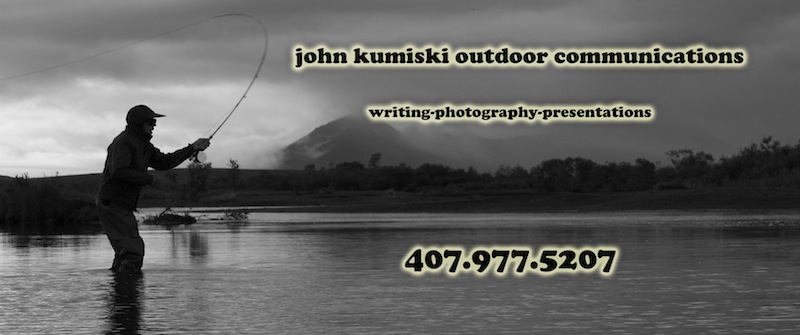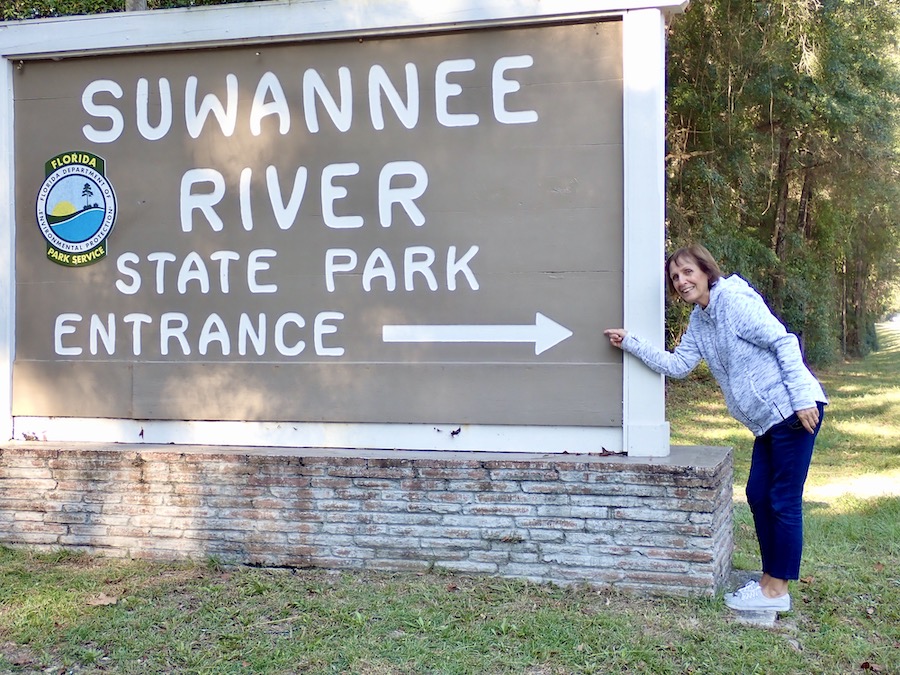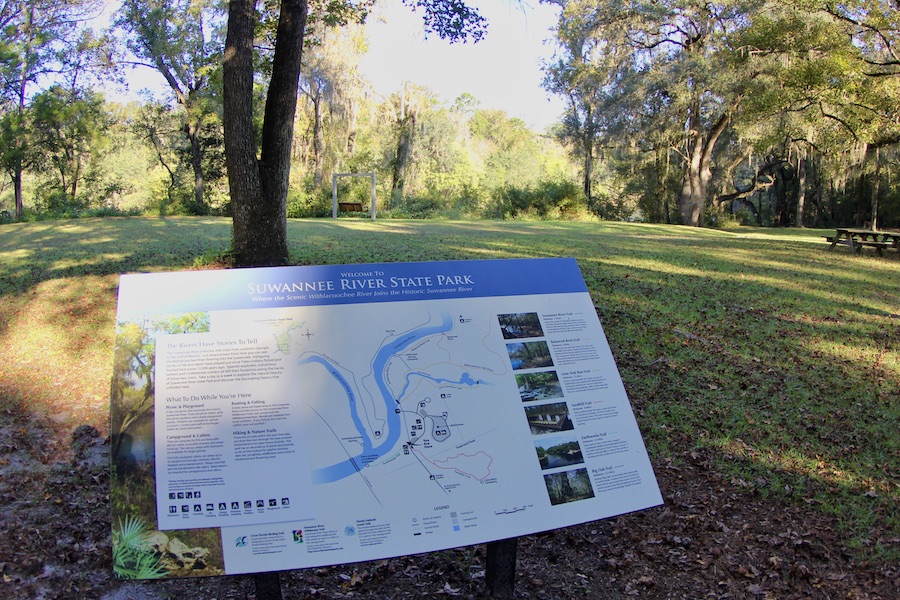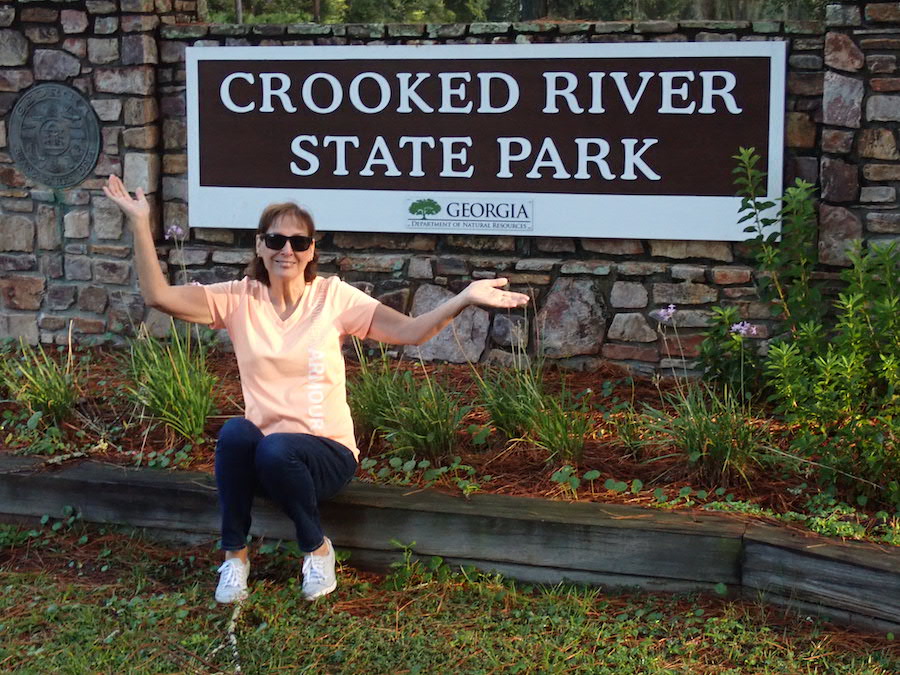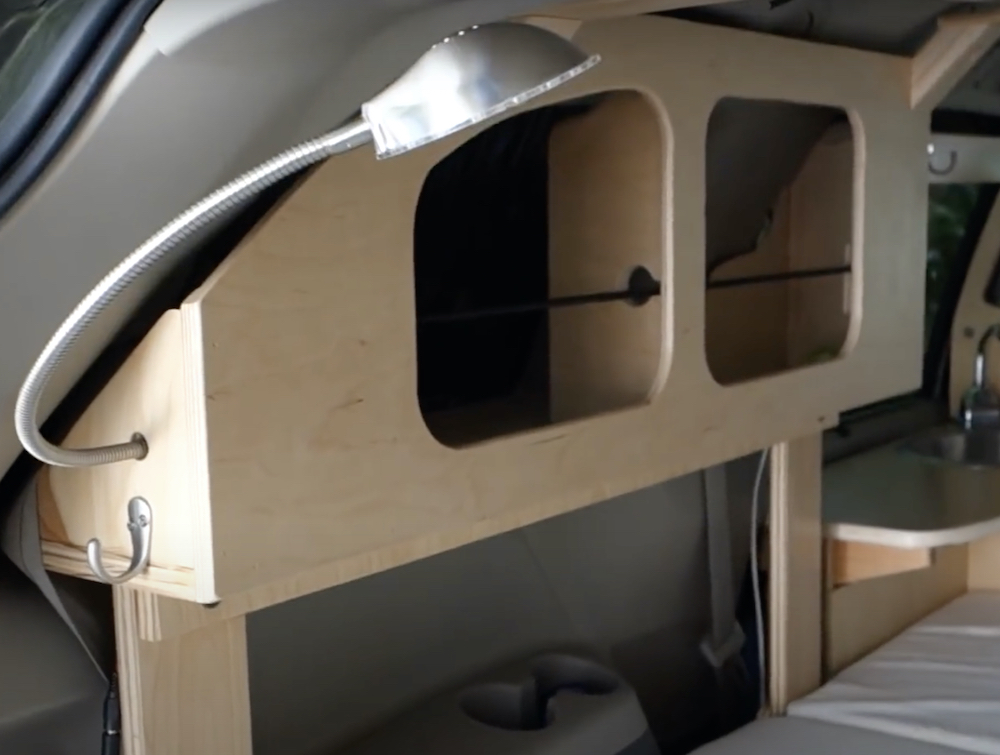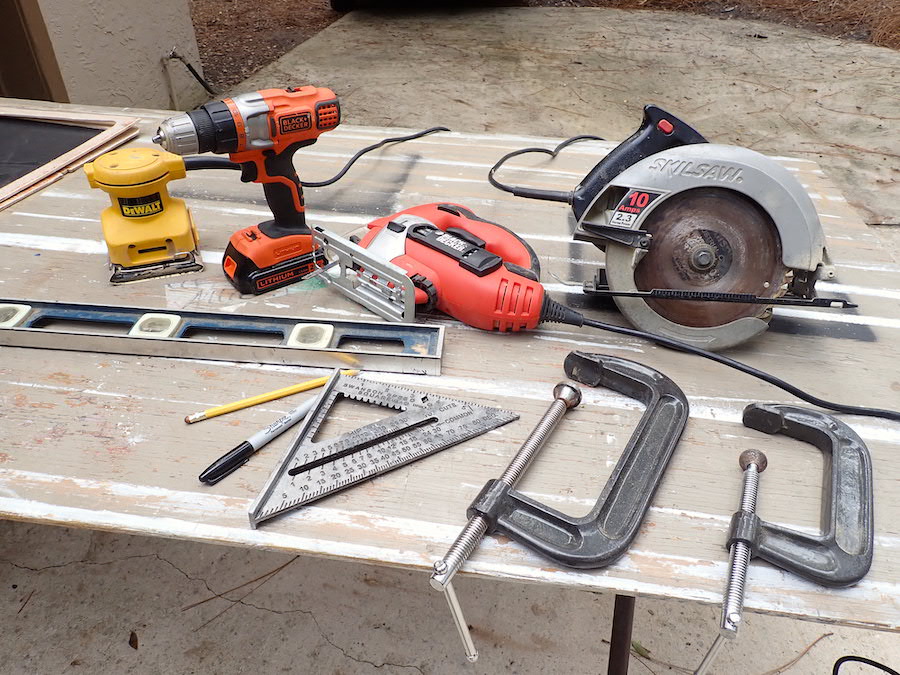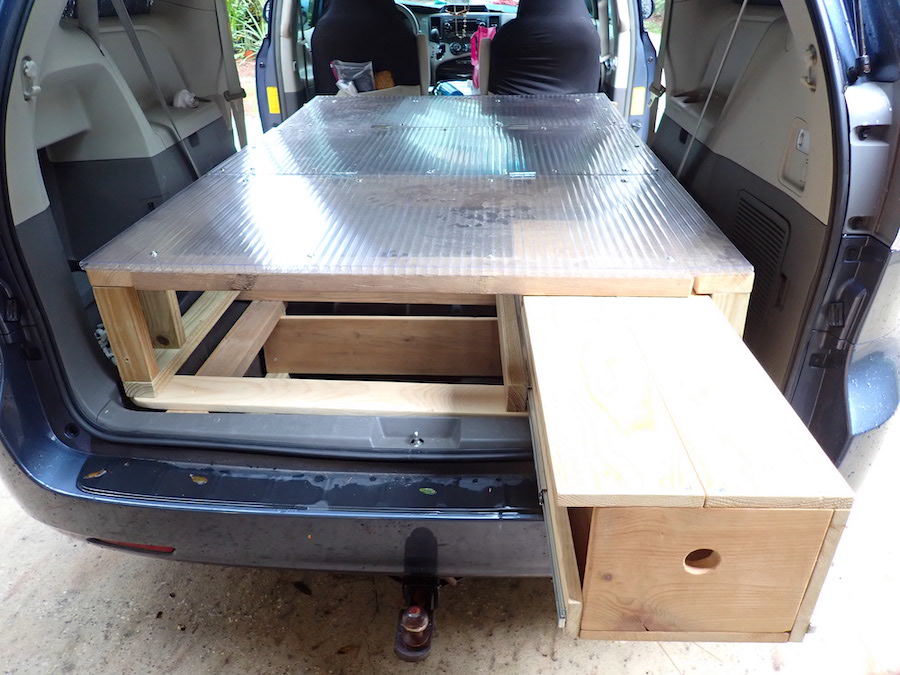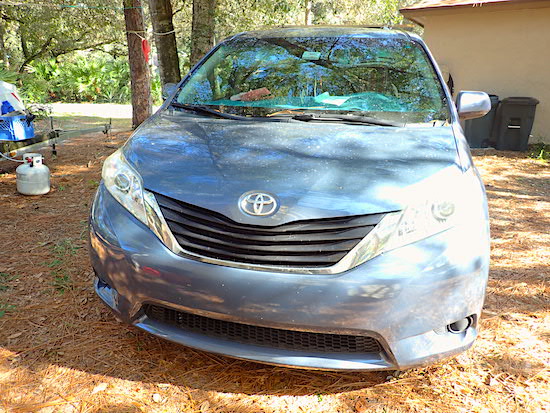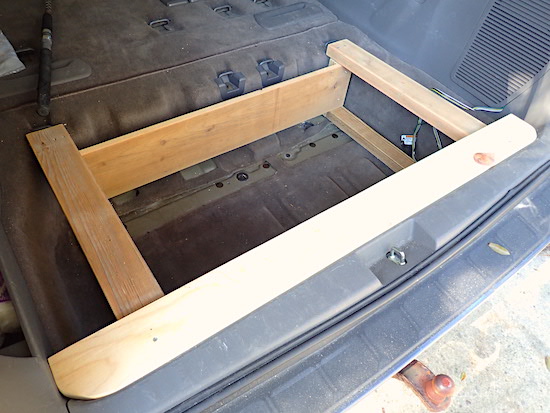Sienna Mini-Camper Van- The First Trip
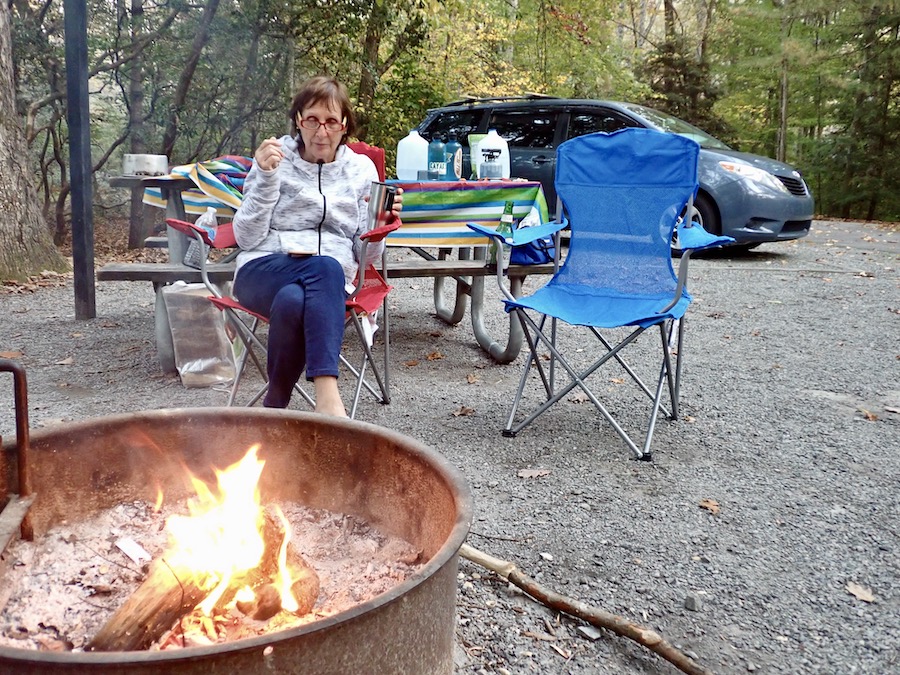
This blog post is about the Sienna mini-camper van- the first trip! It was to North Carolina and it was delightful!
The Plan
Our plan had several threads-
-stay off the interstate as much as possible
-visit Susan’s sister in Athens, Georgia
-visit Jim and Kathy Tedesco in western North Carolina
-hook up with John Gilbert
-go hiking
-go fishing
-and perhaps most importantly, test the livability of the mini-camper and make notes on necessary tweaks.
As a result of all of this, the post may be long for some readers. My apologies.
Plan Into Action
On a Friday morning we were loaded up and were off. Our goal that evening was Suwannee River State Park. We took SR 46 to US 441 to US 90. The construction on 46 made driving that portion unpleasant.
US 441 was a succession of ugly strip malls until we were past Ocala. After that it was lovely. We stopped at a pull-off at Paynes Prairie State Park. A boardwalk went out onto the lake there. Under the boardwalk was a large alligator. There were three guys there. One was leaning over the rail, arm extended, phone in hand, taking pictures of the alligator. I said to him, “Don’t drop your phone.” He said, “If I drop it, he can have it!”
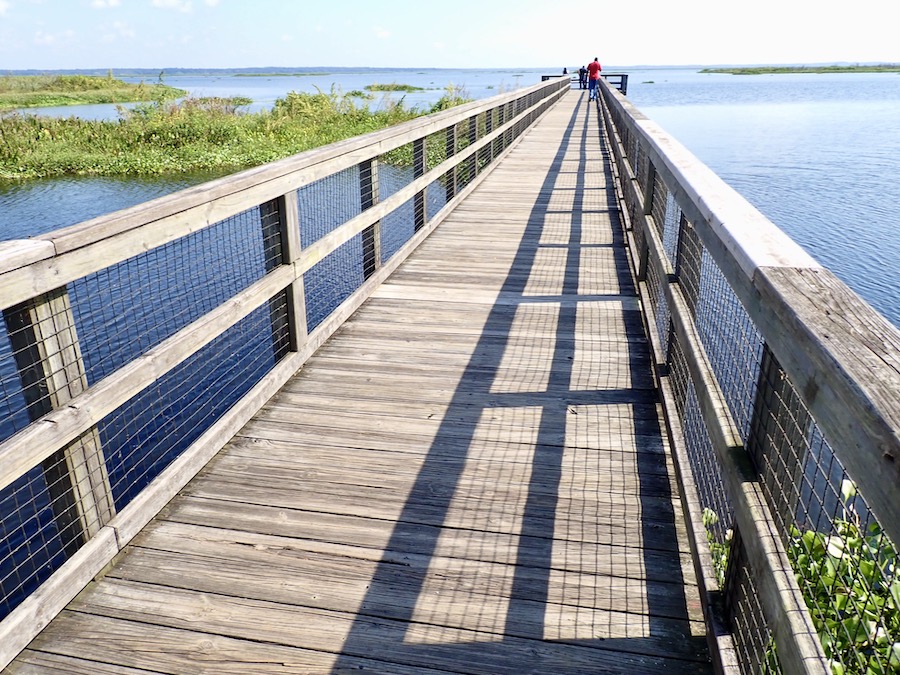
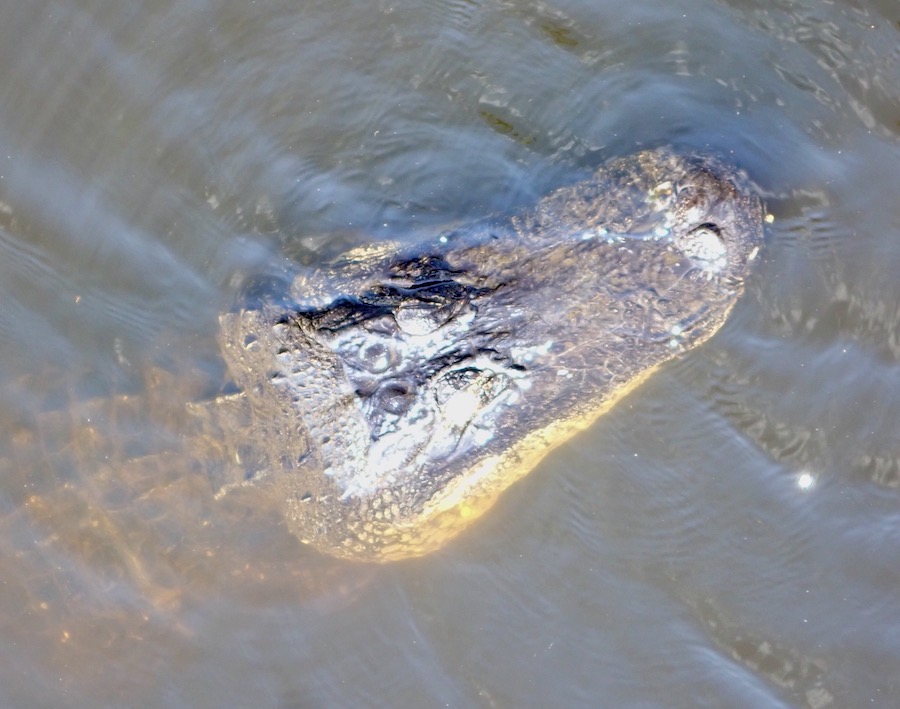
Lake City is not a place you’d want to visit.
Suwannee River State Park was pleasant. I’d had an idea of fishing there but the water was too high. We went for a short walk, with beautiful views of the confluence of the Suwannee and Withlacoochie rivers. We hadn’t budgeted much time there, not enough to see the place.

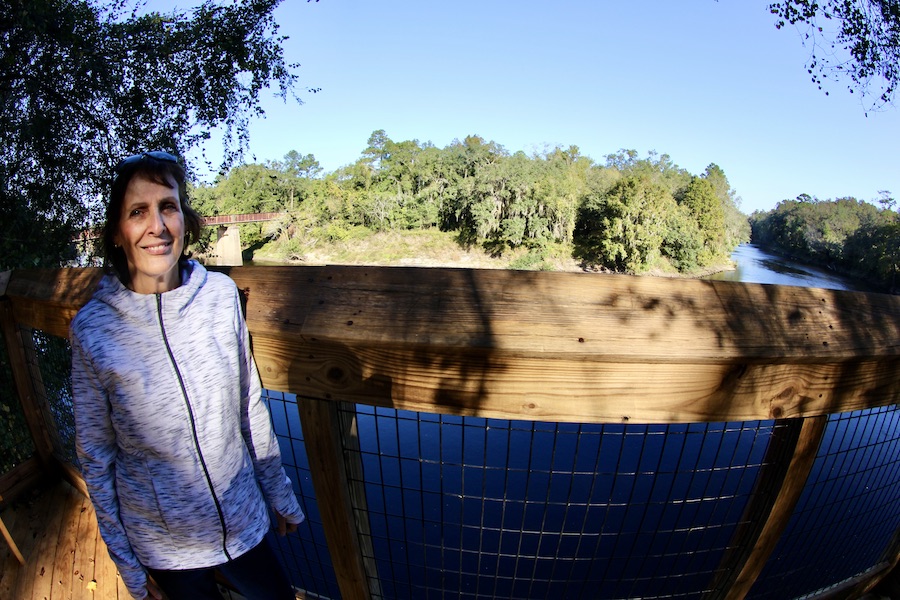
Sleepy Time
Soon enough it was time to test the camper. I’d slept in it once but Susan had not. She suffers from claustrophobia. Would we have to turn around and go home?
We had too much stuff in the Sienna mini-camper van. The cooler took lots of our floor room, and her portapottie took the rest. I had hung a cargo net for our bulky clothes items. We laid down on the bed with our heads to the back of the van and she said, “I can’t do this.” “Do a spin!” I said. “Put your head at the other end.”
It worked. That’s how we sleep in the van now, with our heads forward.
The mattress that we bought on Amazon was awesome. We were very comfortable, even though the cargo net was in our faces.
On to Georgia
Due to the distance to Athens, we spent three hours on I-75 before hitting more back roads through some lovely Georgia countryside. The cotton was ripe in the fields. There were big bales of it, round, like hay bales. We didn’t stop, though- we had an agenda.
It was great seeing Kathleen, it had been a long time since I had. Visiting is weird in pandemic time. We sat outside, with masks on. No hugs, no kisses. Hopefully no COVID either. Two of Kathy’s children and some of her grandchildren were visiting too. The kids made happy noises until after dark, while we told stories, shared old memories, and laughed.
Davidson River
Susan and I slept in the van, and left for North Carolina the next morning. All beautiful back roads, with 15 MPH speed limits where the switchbacks were. Setting up camp once at Davidson River campground was a breeze- just prep the kitchen!
If I could have dialed up whatever weather I wanted for this trip, I could not have done as good a job as what we actually got. Cool, crisp nights, warm, cloudless, sunny days, just spectacular.
The next morning Jim Tedesco showed up with flies and fly rods, and waders for Susan. We all went fishing in the Davidson. Fishing wasn’t epic but we got a couple of trout and had a lot of fun. They day passed quickly, too much so.

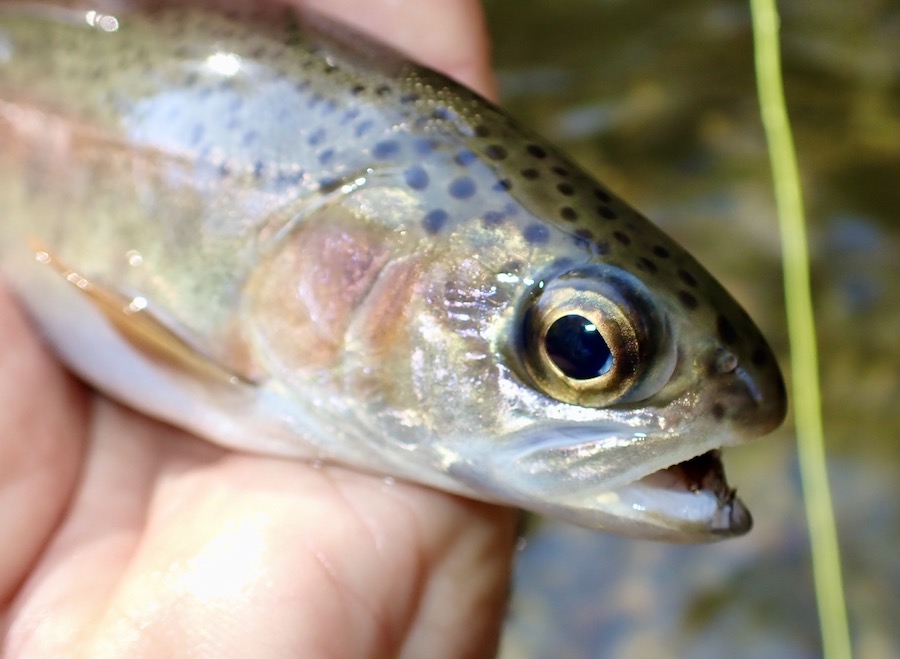
Jim was there again the next morning. We went to Pink Beds hiking trail and took a five mile walk through autumn woods.
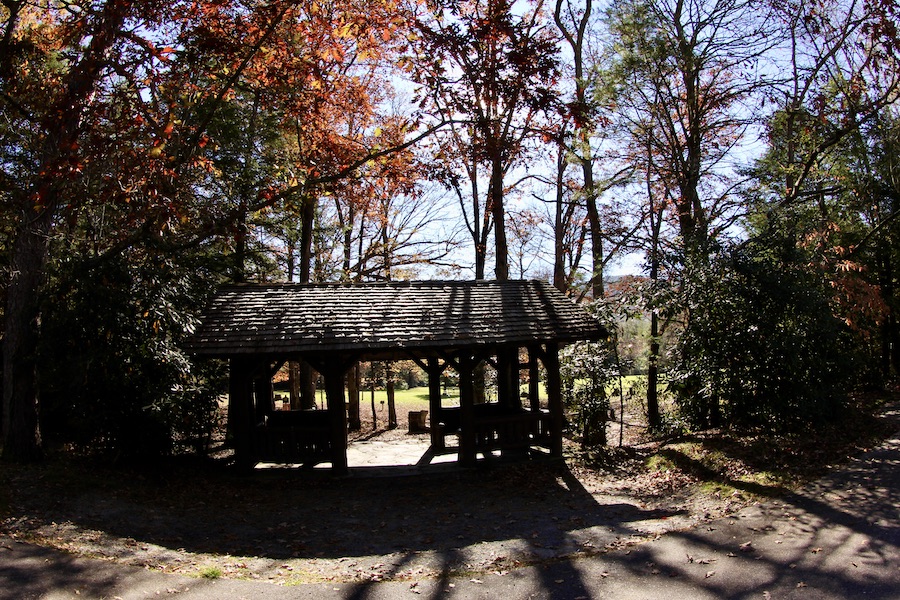
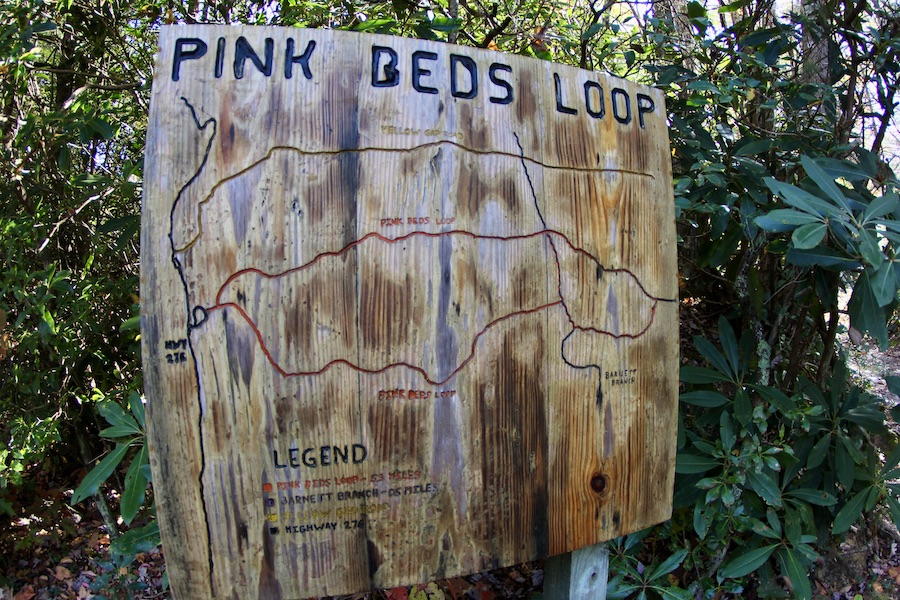
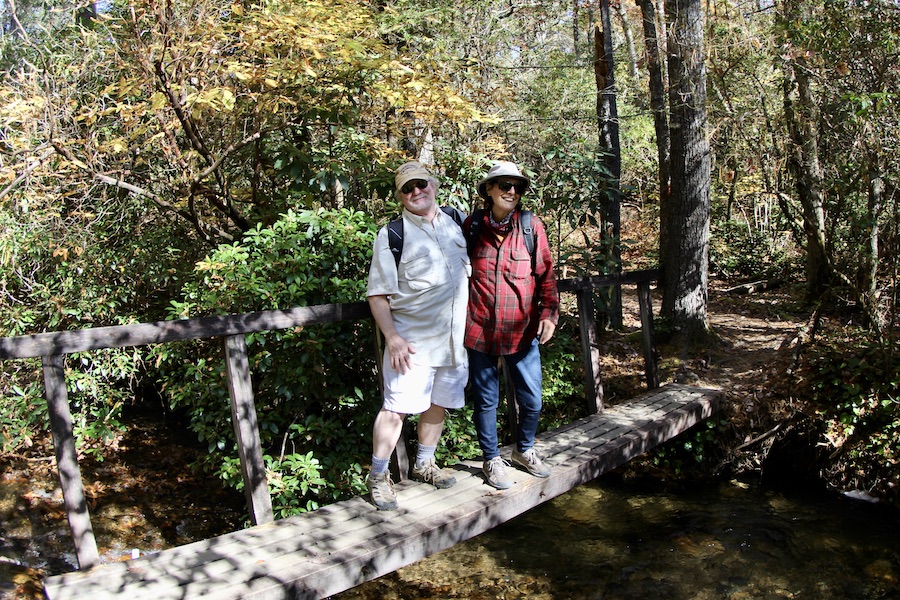
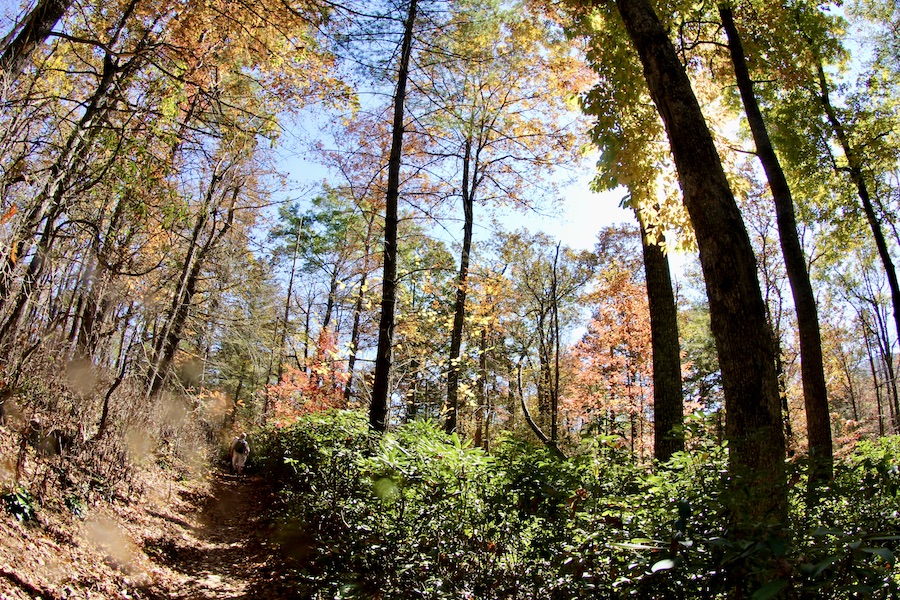
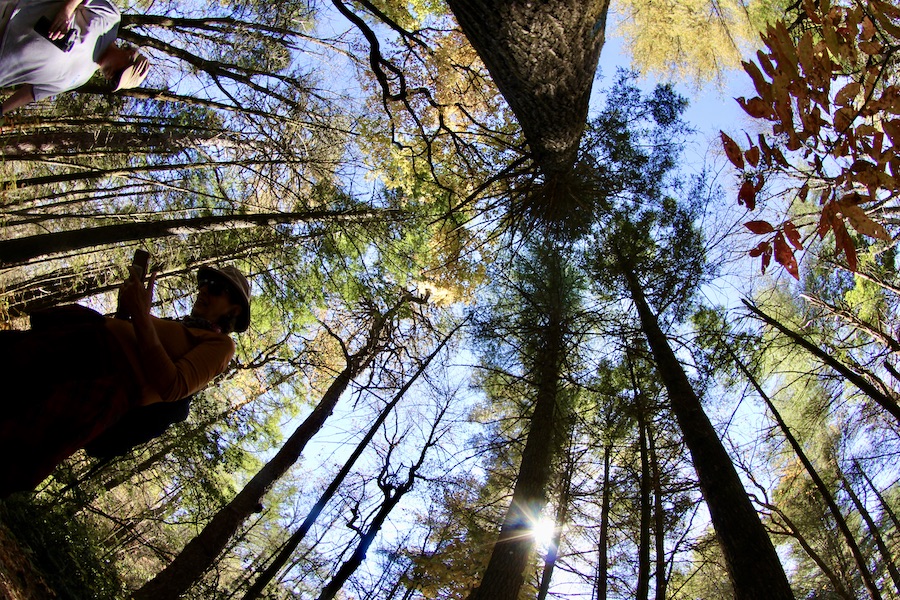
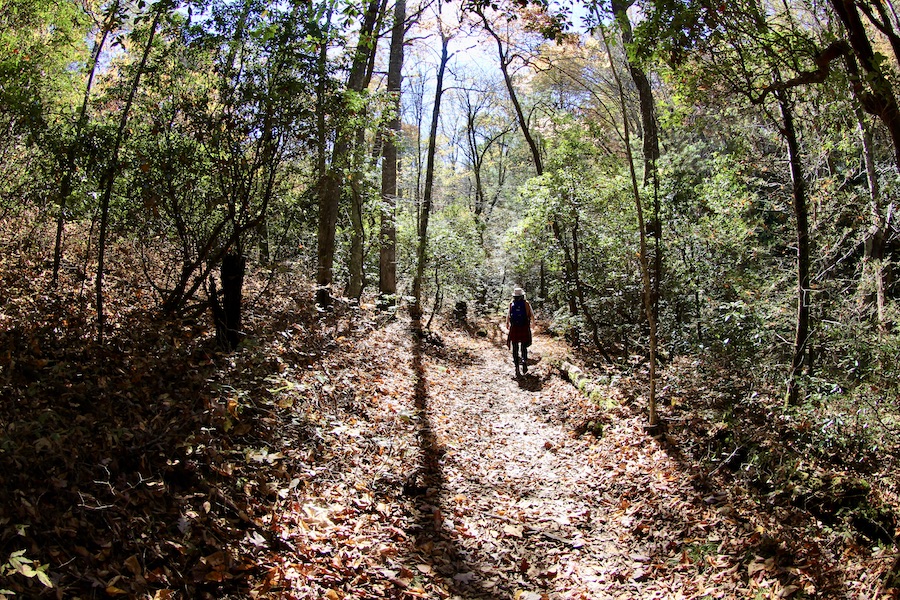
After lunch we went hiking up a tributary of the Davidson, wearing waders, carrying fly rods. We found some trout up there and on a dry fly I caught one of the smallest ones I ever have, little larger than a salmon smolt.
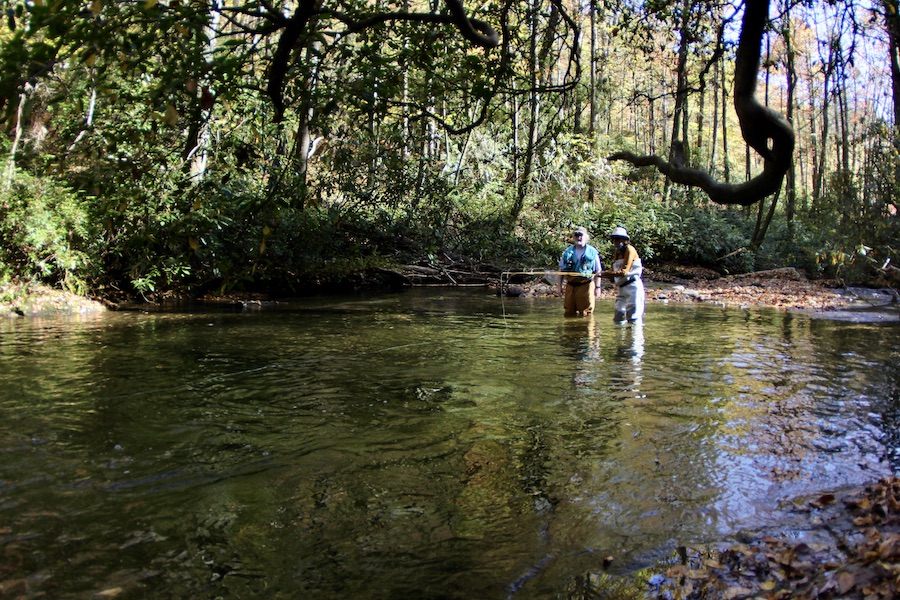

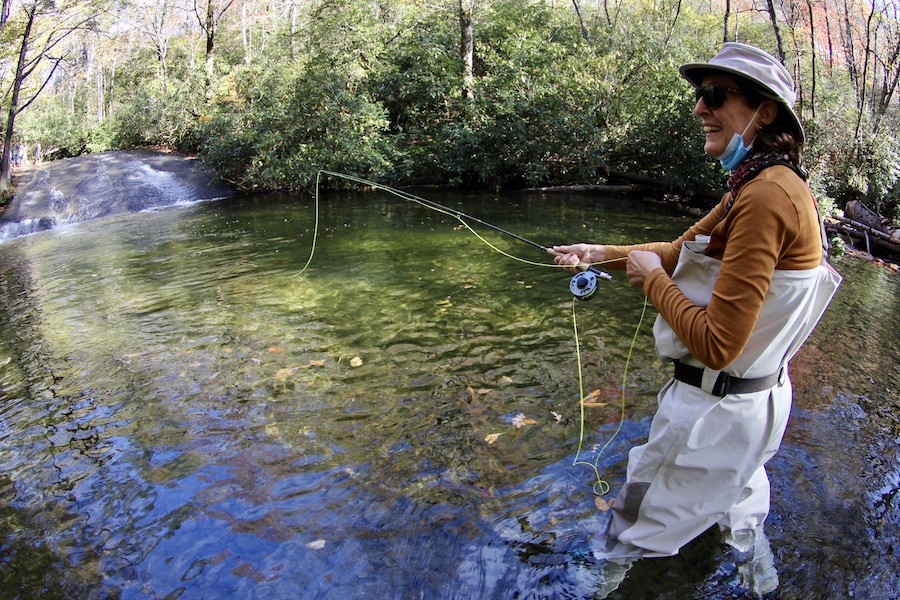
Wednesday Jim and Kathy came to pick up Susan, and John Gilbert came to pick up me. Sue was going sightseeing, I was going fishing. Gilbert and I fished all morning, returning to the campsite for lunch. There was a magical moment there when a gust of breeze knocked a lot of leaves off the trees. We watched, spellbound, as the leaves drifted down like giant, colorful snowflakes falling from a cerulean sky.
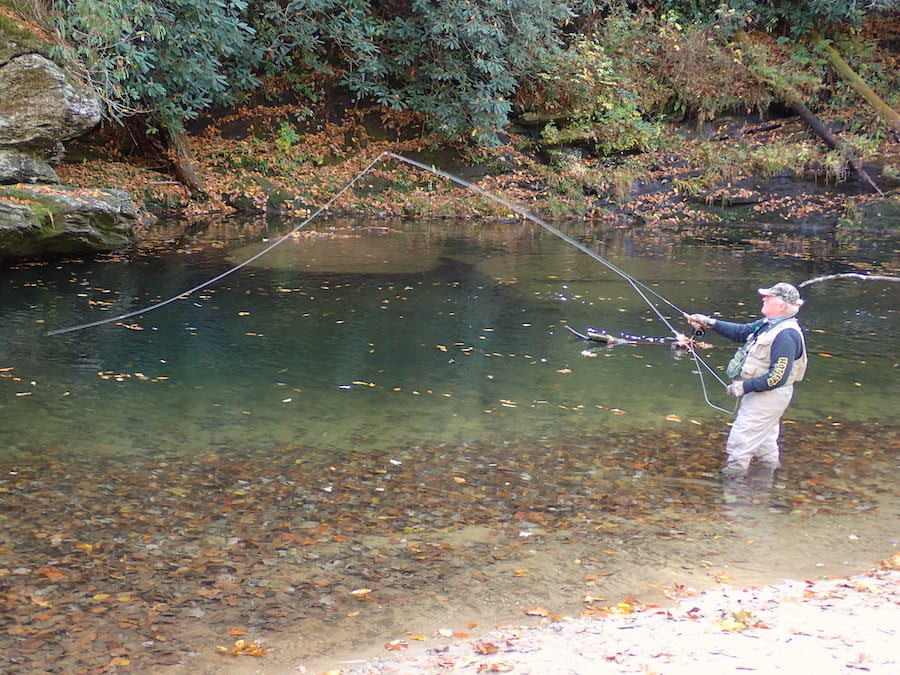
We fished all afternoon, too. Neither of us touched a fish all day. At least one of us didn’t care.
Back Roads Take Longer
Thursday saw Susan and I packing our van and rolling out. We intended to stay at Crooked River State Park in Georgia that night, again travelling by back roads.
These roads were really slow, at first because they were steep and curvy, and then because there were lots of small towns. At lunchtime we were a quarter of the distance we had to go. We had lunch at a local eatery in Clinton, South Carolina. Then we hit the interstate. As it was we pulled into our campsite at sunset, after a very long day in the van.
Heading Home
In the morning we pulled out, looking forward to sleeping in our bed at home that evening. We again took back roads, thus avoiding I-95 through Jacksonville.
For lunch we stopped at a fantastic little eatery in Palatka, Caribbean 450. I wish it was closer to home!
Things We Learned
A few of the things we learned on this trip-
-we need to learn how to better budget our time on the back roads. I think 200 or 250 miles is the most you can comfortably expect to drive in one day. If you want to stop and visit at interesting places, and we do, then it will be less.
-our cooler, an absolutely awesome Orion 65, kept our food cold with only two gallons of ice for the entire trip. Sadly, it’s just too big for the van. I think we need a small refrigerator.
–the cabinets were a must-have. They came in so handy!
-the cargo net needs to be moved further aft, if I can manufacture attachment points back there.
-most importantly, camping in the minivan is entirely viable. We had room for our clothes, cameras, fishing gear, books, computers, food and kitchen gear, books- everything we need to make an extended trip. And it’s comfortable!
We’re already planning another trip!
Special thanks go out to Jim and Kathy Tedesco and to John Gilbert for helping to make our trip so memorable!
A few facts from the trip-
Distance travelled- 1,427 miles
Average fuel economy for the Sienna- 22.9 miles per gallon
Expenditure for fuel- $125.27
Thanks for reading about our Sienna mini-camper van- the first trip!
No affiliate links are included in this blog. If/when we start adding them, we will add a disclaimer. All links are for the reader’s benefit.
